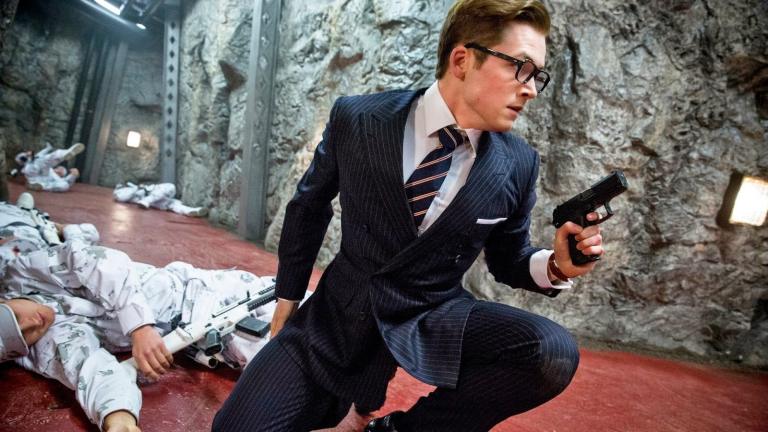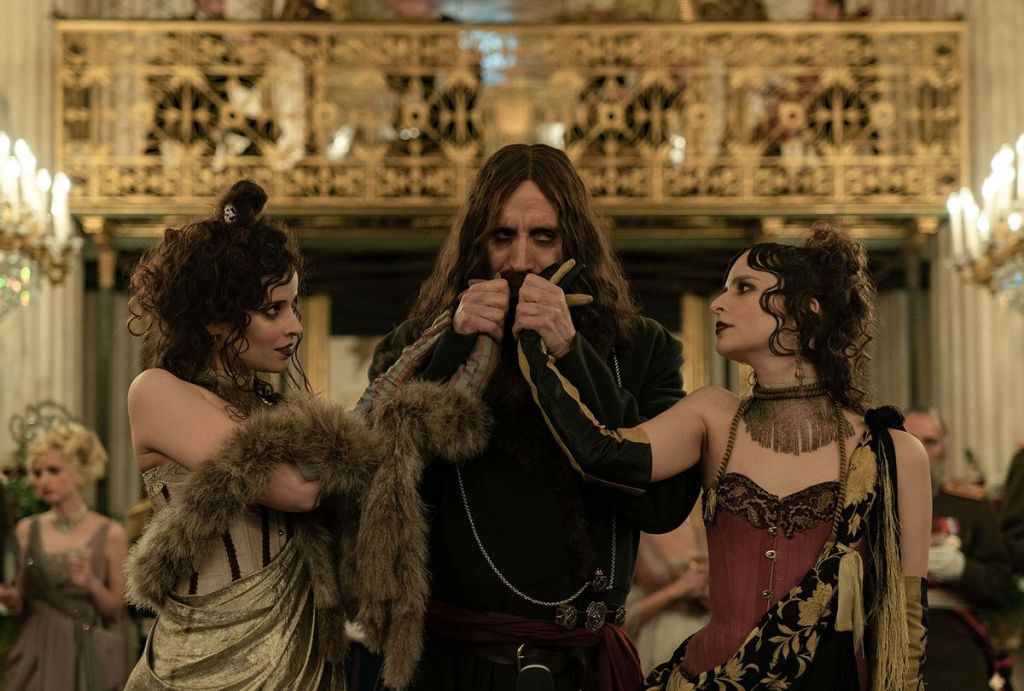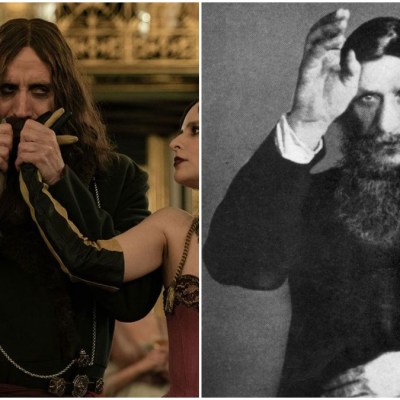From Kick-Ass to The King’s Man: Ranking Matthew Vaughn’s Best Action Scenes
From Kingsman to Kick-Ass, we're ranking the best action scenes from director Matthew Vaughn.

We are living in the superhero age of cinema, but that doesn’t necessarily translate to a golden age of action cinema. Among the biggest directors working today, the best action tends to fall outside of the superhero genre, driven by a handful of action auteurs of which Matthew Vaughn is one of the very best. In honor of The King’s Man recent streaming launch on HBO Max and Hulu, we’re ranking Vaughn’s best action scenes of all time. Were does your favorite fall on our list?
9. X-Men: First Class Finale
Charles Xavier versus Erik “Magneto” Lehnsherr. It’s a conflict we’ve seen play out a lot on the big screen. This is true now in 2022, just as it was true in 2011 when Matthew Vaughn’s groovy semi-reboot of the X-franchise launched. At the time, many were skeptical (including both Fox executives and the audience) about recasting roles that were already iconically played by the likes of Patrick Stewart and Ian McKellen. Yet Vaughn’s handpicked choices for their replacements, James McAvoy and Michael Fassbender, developed an instant and crackling chemistry.
Take the movie’s riveting final action sequence: Magneto’s inevitable betrayal of his fellow mutants is practically a foregone conclusion in these kind of movies. Nevertheless, when Erik chooses to damn his soul and put on his helmet for the first time, so as to murder Sebastian Shaw (Kevin Bacon), the fellow who killed his mother, there is a nihilistic whiff of tragedy and doom. And as Magneto makes a fateful Nazi medallion pass through Shaw’s brain, there is a sickening degree of simultaneous glee and horror as we track the victim’s silent pain through Charles’ psychic link to the man—with Vaughn’s camera identically mirroring a pan across Charles’ screaming face with the journey the coin makes in Shaw’s old noodle. You would never see that in an MCU movie.
The subsequent battle between Charles and Erik on a Cuban beach with no less than the combined naval superpowers of the U.S. and USSR bearing down on them is phenomenal not because of the CGI spectacle, but because of the heightened emotional anguish Vaughn is able to elicit from his two leading men, and the onlookers who are both horrified and exhilarated. – David Crow
8. The Undead Sword Fight in Stardust
Before Charlie Cox was Daredevil, before Claire Danes was Carrie Mathison, there was Stardust, Matthew Vaughn’s criminally underrated adaptation of the Neil Gaiman fantasy novel of the same name. The fairy tale adventure follows Cox’s hopeless romantic Tristan Thorn, a young man who leaves the non-magical safety of Wall for the kingdom of Stormhold, in search of a fallen star to gift to the object of his affections Victoria (Sienna Miller). Danes’ Yvaine is that star, and far scarier people than Tristan are after her: witch Lamia (Michelle Pfeiffer) and her supernatural sisters, who need Yvaine’s celestial power to stay eternally young, beautiful, and powerful; and a gaggle of cutthroat princes looking to secure an ascension to their late father’s throne.
All parties come together in the film’s magically driven climax, a sword fight between Tristan and the undead body of Septimus (Mark Strong), controlled by Lamia. The fight choreography intentionally skews clever rather than fast or complex, as Septimus’ body contorts in strange and unexpected directions to parry and thrust. While the stakes are high, this scene is about adventure more than mortality, imbued with family friendly fairy tale peril rather than the kind of machismo-driven fight sequences that characterizes so much of modern action. While things will inevitably become more dire for Tristan, here, swordplay is a bit of good fun for the viewer, as the ghosts of Stormhold’s princes (including a befuddled Septimus himself) serve as the audience surrogate peanut gallery, reacting to each twist and turn. – Kayti Burt
7. Big Daddy Is R-Rated Batman in Kick-Ass
Before Nic Cage’s current and totally deserved career revival, there was 2010; there was Big Daddy. In the same year Cage did phenomenal work in Bad Lieutenant, he took on a memorable supporting part in Vaughn’s irreverent superhero satire, Kick-Ass. There, Cage plays Big Daddy, a demented comic book nerd turned wannabe superhero. He wears the armor of Michael Keaton while speaking with the diction of Adam West. What a fanboy—delightfully so.
But his one big scene is not one making fun of fan culture or tapping into his bizarre parenting of his daughter Mindy (Chloe Grace Moretz). Instead it’s where Big Daddy becomes a big badass. The novelty of seeing a noble do-gooder like Batman indulge in R-rated carnage is somewhat lessened these days thanks to the grim dark nonsense of Zack Snyder’s take on the character. Nevertheless, there’s an infectious giddiness in Kick-Ass that we’re seeing something taboo and rather naughty during Cage’s big shoot ‘em up, which takes an over-the-shoulder view of his not-Batman slaughtering a room full of gangsters with a shotgun, knives, and grenades. It’s brutal and aware of the comic book heresy it is committing (unlike certain other actual Batman movies). – DC
6. Hit-Girl Goes on Rampage in Kick-Ass Finale
There’s a reason Kick-Ass turned a once pint-sized Chloe Grace Moretz into a star at only 10 years old: Hit-Girl is terrifyingly hilarious when she goes into killing machine mode. And the end of Vaughn’s movie leans into this, complete with a major action sequence scored to Joan Jett’s “Bad Reputation.” The ruthlessness with which Vaughn and his frequent action collaborator, stunt coordinator Brad Allan, stage her murder spree in a mob boss’ surprisingly tasteful library would do Kill Bill proud. But where the sequence excels is punctuating each moment of cartoonish carnage with a beat of incredulity on the parts of said mob boss (Mark Strong) and his hapless son, “the Crimson Mist” (Christopher Mintz-Plasse).
The sequence turns out to be al one build to the reveal of “Chekov’s Gun” taken to what appears to be its max degree when we realize we’ve been setting up “Chekov’s Bazooka” the whole time… And the movie then tops that when it’s revealed Hit-Girl’s own secret weapon was Kick-Ass arriving in a sci-fi jetpack to gun down the remaining goons to Elvis Presley’s cheesy cover of “The Battle Hymn of the Republic.”
Amen. – DC
5. Harry’s Teaches a Lesson in The Kingsman
Anyone who has seen Kingsman: The Secret Service knows that it has some of the most dynamic action scenes in modern cinema. While much of that is down to Vaughn’s direction (not to mention Henry Jackman and Matthew Margeson’s score), we can’t discount the script (written by Vaughn and frequent collaborator Jane Goldman) that supports it all with its brilliant use of the recurring theme of the underestimated underdog.
While much of this theme is explored through main character Eggsy (Taron Egerton), a working class kid consistently underestimated by the British spy world’s mostly upper crust set, Colin Firth’s Harry Hart also gets in on the subversive action. The pub fight that comes in the film’s opening act is the first time we see Harry in proper action, asking politely for Eggsy’s neighborhood bullies to leave them alone before unleashing the full, brutal force of his Kingsman training on them. Manners maketh man, indeed. – KB

4. A Dance with Rasputin in The King’s Man
Whatever you might think about Vaughn’s latest movie, The King’s Man, there is no denying that the Rasputin fight sequence is nothing short of unbridled joy. Before this moment, Ralph Fiennes’ Lord Orlando Oxford has been a bit of a stuffy prig. But when paired with Rhys Ifans’ magical Rasputin, he’s suddenly being happily seduced by the boorish Russian mystic, who cures his leg and vomits his poison all in the same breath.
That strangeness turns out to be foreplay ahead of the main event though, which sees Rasputin fight Orlando, son Conrad (Harris Dickinson), and valet Shola (Djimon Hounsou) all at the same time! And the way the frantic editing before the brawl pauses to take a deep breath via the majestic shot of Rasputin assuming the position of a Cossack dancer—all while Tchaikovsky’s “1812 Overture” ascends—is a case-study in cathartic action-comedy release. The subsequent fight choreography, again overseen by the late Brad Allan in his final collaboration with Vaughn, is the stuff of action movie legend as Rasputin hilariously moves like a ballet dancer against a couple of would-be swashbucklers. – DC
3. Magneto Hunts Nazis in X-Men: First Class
To call this iconic scene of Erik Lensherr (Michael Fassbender) walking into an Argentinian bar to kill two escaped Nazis as part of his hunt for Klaus Schmidt an action scene is a bit of a stretch, as the action is minimal. The Nazis aren’t able to put up much of a fight against Erik’s metal-manipulation powers, or even his physical strength. But the mastery of the scene highlights just how important both the building of anticipation and the articulation of character is to any good fight scene. This scene isn’t about the glamour of violence, as too many lazy action sequences are, but rather the journey of Erik’s character. Here, the viewer is undoubtably on his side. Magneto is famously not simply looking for justice; he’s looking for vengeance for the death of his mother in a concentration camp, for countless others, and for his own trauma. Here, he understandably wants the two Nazis to know who he is and why he is killing them before he strikes, luring them in with a faux camaraderie before letting them know that he is not like them.
The warm sepia tones of the scene give the period sequence an air of nostalgia, sure, but also highlight the misleading warmth of the trap Erik is leading them into. The music builds as the three men sit symmetrically around the bar table, drinking their glass tankards of beer in improbably long gulps. Erik reveals the tattoo given to him at Auschwitz before he easily secures one of the men’s knifes and uses the gun-wielding bartender to kill the men who were “just following orders.” It’s worth noting that none of the dialogue in this scene is delivered in English until its very end, but it doesn’t matter if you understand what the men are saying to one another. It is incredibly clear from Vaughn’s direction and Fassbender’s steely performance what is going on. From a storytelling perspective, it’s vital that we understand why and how Erik uses violence, that we are on his side, before we are forced to choose our allegiance in a much more morally ambiguous situation in the film’s devastating final act. – KB
2. Hit-Girl Rescues Big Daddy and Kick-Ass
Kick-Ass is a comedy. It’s also not. That duality was hard for audiences to accept in 2010, a few years before the similarly self-deprecating yet simultaneously mushy Deadpool did the same shtick to more lucrative effect (although Kick-Ass is a far better movie). The amusement of its tonal chaos is best crystallized by the picture’s surprisingly harrowing action scene in which Moretz’s Hit-Girl desperately attempts to save her father, as well as poor dim Kick-Ass (Aaron Taylor-Johnson).
The scene is thrilling, heartbreaking stuff, alternating between a slick use of video game-like first-person POV photography as Hit-Girl slaughters gangsters in the dark with her night vision goggles on, and then kicks it up a notch by having the scene become lit with the glow of Big Daddy’s burning, screaming flesh. Composer Jon Murphy further complements the scene and Cage’s heightened performance by repurposing one of the most tense passages of his Sunshine score to better effect here. The result is a poignant and visceral sequence that’ll make you cry more than laugh. – DC
1. Kingsman’s Church Massacre
If you saw Kingsman: The Secret Service during its theatrical run, then you probably came out of the cinema desperate to talk to someone about this scene in particular. The cacophony of violence comes late in the film’s second act, as Samuel L. Jackson’s Richmond Valentine tests his murder-inducing SIM cards on a church of homophobic, racist evangelicals in Kentucky. The test run is… successful, the death count immediately skyrocketing due to the fact that professionally trained killer Harry Hart (Firth) happens to be present. In an impressive demonstration of both Vaughn’s directorial prowess and Firth’s agility, the action sequence is shot in handheld, with the effect of it being done in one fast-moving shot. We follow Hart as he absolutely decimates the church’s population with his gun and body. The illusion was done by finding “joins” between action choreography, which was filmed over the course of seven days and involved 130 actors.
Vaughn intercuts the violence with reaction shots of Eggsy, Valentine, Sofia Boutella’s Gazelle, and Mark Strong’s Merlin watching (or trying not to watch) the scene play out, giving viewers an occasional break from the excessive violence. (At one point, Harry literally plunges a knife downward into someone’s head. To watch this scene, even now, is to mutter “I can’t believe they showed that” consistently at the screen for five straight minutes.) It’s a testament to Vaughn’s skill as an action director that he is able to maintain the light, fun tone of this spy adventure while also depicting such (intentionally) senseless violence. (The use of Lynyrd Skynyrd’s “Freebird” certainly helps.)
Vaughn is notable as an action director for the ways he doesn’t immediately default to excessive violence in action scenes. Unlike some directors, he knows that the most violent is not always the most impactful or what the story needs. But Kingsman‘s church massacre demonstrates that, when the story calls for it, Vaughn can turn the violence way up. For me, this scene is so impressive not for its logistical successes (though those are worth discussing), but for the way it is able to show such degrees of horrific violence without disrupting the tone and flow of the cinematic experience. It’s a feat like nothing else I’ve seen in modern action cinema. – KB

